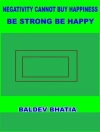Plains Indian biographic rock art can be “read” by those knowledgeable in its lexicon. Presented is a lexicon of imagery, conventions, and symbols used by Plains Indians to communicate their warfare and social narratives. The reader is introduced to Plains Indian “warrior” art in all media, biographic art as picture writing is explained, and the lexicon is described, providing a pictographic “dictionary, ” and explains conventions and connotations. Finally, it illustrates four key examples of how these narratives are read by the observer. Familiarity with the lexicon will enable interested scholars and laypersons to understand what are otherwise enigmatic rock art drawings found from Calgary, Alberta through ten U.S. states, and into the Mexican state of Coahuila.
Table of Content
List of Illustrations
Acknowledgments
Preface
Introduction
Chapter 1. Biographic Art as Picture Writing
Chapter 2. The Biographic Art Lexicon
Chapter 3. The Pictographic Dictionary
Chapter 4. Conventions and Connotations
Chapter 5. Reading the Narratives
Glossary
Appendix I: Site Names and Numbers for number of Figure 1.1, North and South Halves
Appendix II: Source Materials and site index for illustrations
Bibliography
Index
About the author
David Kaiser has documented and researched the rock art of the Plains and Pacific Northwest for over twenty years. He is a former president of the Oregon Archaeological Society and a current Board member of the American Rock Art Research Association, recently winning their Wellmann Award for Distinguished Service in the Field of Rock Art Research. He has authored and co-authored more than thirty publications including monographs, book chapters, and articles in national and regional journals.












